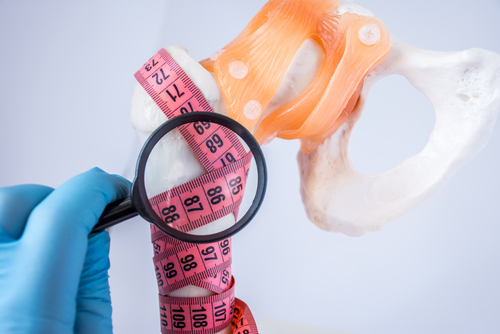Cushing’s Syndrome Patients at High Risk of Bone Problems Regardless of Vitamin D Levels, Study Shows
Written by |

Cushing’s syndrome patients have a higher risk of fractures due to reduced bone mineral density and osteoporosis, but these issues are not associated with vitamin D or parathyroid hormone levels, two important regulators of bone health, a study shows.
The study, “Bone health in patients with Cushing’s syndrome,” was published in the Indian Journal of Endocrinology and Metabolism.
The excess glucocorticoids seen in Cushing’s syndrome patients has a significant impact on bone health, reducing bone protein and mineral content (osteopenia) and bone density (osteoporosis), which puts patients at a significant risk for fractures.
Vitamin D, an important nutrient for the maintenance of bone health, is mainly acquired by exposure to sunlight, diet, and supplements. However, most studies evaluating bone mineral density (BMD) in Cushing’s syndrome have been conducted in Western countries, where vitamin D levels are sufficient, and little is known about bone health in patients from South Asian countries, who have insufficient vitamin D levels.
To address this, researchers at the All India Institute of Medical Sciences evaluated the BMD of all endogenous Cushing’s syndrome patients diagnosed at their institute between July 2015 and December 2016. A total of 37 adult patients were included, along with 48 healthy volunteers of similar age and sex.
In all, 16 patients had Cushing’s disease (caused by a pituitary tumor), seven had adrenal Cushing’s syndrome, six had ectopic ACTH syndrome (a tumor outside the pituitary producing too much of the adrenocorticotropic hormone, or ACTH), and eight had excess ACTH of unknown cause.
Cushing’s patients had significantly higher central obesity than the controls, and 81% had high blood pressure, whereas none of the controls did.
For most patients (94.6%), proximal muscle weakness was the primary symptom of Cushing’s syndrome. Other common manifestations included abdominal stretch marks, easy bruising, moon face, and facial redness.
More than half of the patients (56.7%) complained of backaches, and 8.1% had a history of fractures.
Levels of alkaline phosphatase in the blood were 70% higher among Cushing’s patients than in healthy controls, which was suggestive of bone problems. However, levels of vitamin D and intact parathormone (iPTH), two important regulators of bone health, were similar between the groups.
BMD from the lumbar spine and hip, measured by dual-energy X-ray absorptiometry, was found to be significantly lower in patients than in controls, regardless of the type of Cushing’s a patient had. Overall, 44.5% had osteoporosis and 40.7% had osteopenia, and several patients had bone deformities and fractures.
Bone loss, however, was more severe in the lumbar spine than in the hip, consistent with a worse effect of glucocorticoids on the trabecular bone (where a significant part of the bone volume is filled with marrow and fat) than in cortical bone (a more compact type of bone).
“Our study confirms the fact that patients with Cushing’s syndrome are at very high risk of osteoporosis,” the researchers wrote. The findings suggest that these patients “should be evaluated for bone health” as their bone complications may “cause significant morbidity and mortality,” according to the team.





